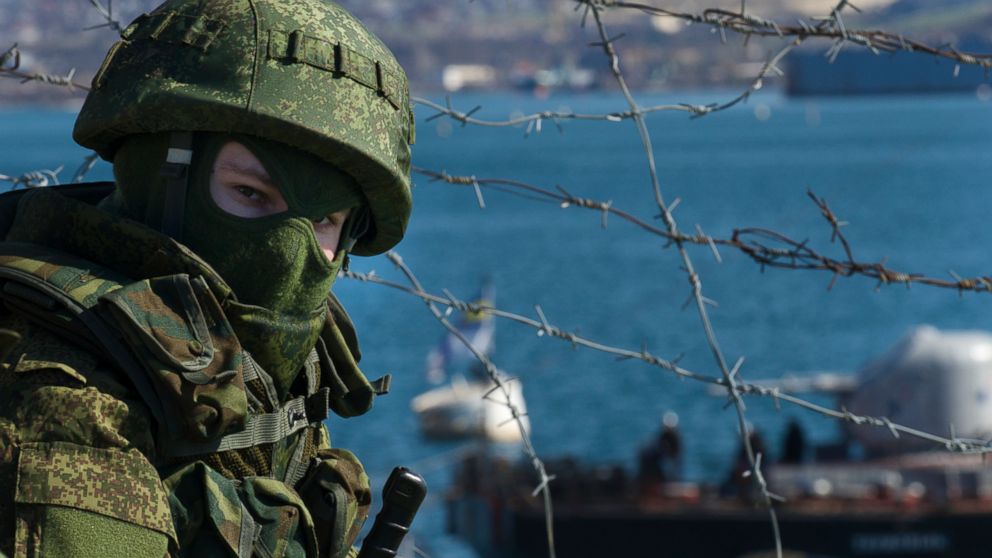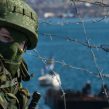
Putin’s Smart Defense: Wars, Rumors of War, and Generations of Wars (Part One)
Publication: Eurasia Daily Monitor Volume: 11 Issue: 104
By:

Since Vladimir Putin was elected to the Russian presidency in May 2012, he has promised to place “smart defense” at the heart of Russia’s security strategy (https://www.rg.ru/2012/02/20/putin-armiya.html). Testing new concepts and approaches to the use of the Armed Forces featured in the operational-strategic exercise Zapad 2013. These were further refined in the numerous snap inspections of combat readiness introduced by Defense Minister Sergei Shoigu and were displayed to ruthless effect in the operation in Crimea. Yet, the expert and policymaking communities among members of the North Atlantic Treaty Organization (NATO) have been slow to identify potential breakthroughs in Russian military thinking and their application of military art. Crimea revealed a Kremlin that had found the appropriate mix of political, diplomatic, informational and military tools to apply minimal coercive pressure to dislodge a part of Ukrainian territory. Moreover, as the crisis unfolded in Ukraine’s east, this new mix of political and military interaction in Moscow points to an application of experimental concepts to asymmetrically boost Russia’s power in the international arena (RIA Novosti, May 16; Vedomosti, March 12).
Traces of the extent of tinkering, experimenting and learning within the Russian Armed forces were evident in Zapad 2013 and the series of “snap inspection” exercises, which have occurred frequently since February 2013. These have tested new approaches to command and control, mixing special forces from various power ministries to support regular troops, as well as placing greater emphasis on improving strategic mobility. Equally, it is clear that Russian military analyses of recent conflicts, including Afghanistan, Iraq, Libya, Syria and others, are an antithesis to Western readings. Putin declared during Zapad 2013 that the snap inspections offered real insight into combat readiness and had proved to be a turning point in improving capabilities. In January 2014, Colonel Dmitriy Zelenkov, acting chief of the Western Military District (MD) Combat-Training Directorate, noted, “The planning of combat operations in real time, with the organization of a redeployment of the troops and interaction with commercial entities—railroad, sea, and river transport and marches performed by various modes—will continue” (Krasnaya Zvezda, January 31).
Important manifestations of this Russian soft power and hard power synergy are evident in its actions, causing confusion and speculation among various actors. Though, the US and the EU continue to impose sanctions as they condemn Russia’s annexation of Crimea, and NATO’s leadership warns of the threat that Russian military forces pose to eastern Ukraine in the form of troop deployments and covert intervention. There is wild speculation about the next target of Putin’s aggression. “Little green men” fight with “little black men” and Ukraine’s regular Army across the east and south.
Of course, the image of “little green men” or “polite people” was crafted by the GRU Spetsnaz (Russian military intelligence special forces), and the operation in Crimea was so successful that these phrases passed into both media and analytical coverage of the crisis (RIA Novosti, May 16). But their appearance and use in the crisis marked elements of the underlying shift in Russian defense and security thinking, which blurred the distinction between war and peace, combining an array of policy tools to achieve strategic objectives. Consequently, it is not surprising to find that among the first individuals decorated by the Kremlin following the Crimea operation, were in fact Russian journalists who were at the forefront of Moscow’s 21st century information operations (un1.tv, May 6). By late May, Der Spiegel acknowledged the depth of Moscow’s success in its information campaign (https://www.spiegel.de/international/world/russia-uses-state-television-to-sway-opinion-at-home-and-abroad-a-971971.html).
Russian military deployments and exercises along the northern, eastern and southern borders of Ukraine kept international media attention on the threat of overt Russian invasion a la Crimea, when that opportunity has long since passed. For the same month, the press has been reporting on the appearance of more “little green men” who have assisted a hodgepodge of federalist and secessionist pro-Russian militias to seize, hold and defend public buildings in eastern Ukraine. The rumors of war have led to talk of a “phony war”—more about posture than battle. On May 3, the world watched street violence turn into premeditated mass murder in Odessa (Interfax, May 4; Oriental Review, May 15).
In response, Ukrainian Minister of Internal Affairs Arsen Avakov stated the problem in Odessa had been the terrible local police, which he planned to replace with “Kyiv-1,” a group of “civil activists” who would help the Black Sea city “in these difficult days.” On May 9—Victory Day commemorating the end of the Great Patriotic War—Kyiv’s anti-terrorist operation struck at the coastal town of Mariupol. Units of the Ukrainian National Guard raided downtown Mariupol, used heavy weapons to engage “separatist police” at their police station, killing 20, and burned the building to the ground before attacking unarmed civilians in the streets and then withdrawing, plunging the town into complete chaos. In response to these events, Minister Avakov said that about 20 “terrorists” were killed and four captured during the storming of a police station in Mariupol on May 9” (https://www.facebook.com/arsen.avakov.1/posts/633487653408011).
Avakov’s view of the anti-terrorist operation as a fight to the death is shared by others supporting the interim government. Ihor Valeriyovych Kolomoyskyi, the billionaire oligarch, whom the interim government in Kyiv appointed governor of Dnepropetrovsk Oblast, has used his personal funds to help pay to arm and equip special units of the Ukrainian National Guard to conduct operations against Russian-supported paramilitary forces in the east. Boris Filatov, the deputy governor of Dnipropetrovsk, with the support of his boss, put out a bounty on arms turned into Ukrainian authorities and $10,000 for each “little green man” mercenary handed over. A few days later, Kolomoyskyi defined the battle in eastern Ukraine: “I would like to warn all the little green men that, unlike some others, we have balls, and if they try to seize State Security and police buildings, we will shoot to kill. Everybody who wants to make war in our region should know that Dniepropetrovsk will be a second Stalingrad for them, but in that struggle the Ukrainian people will win” (https://euromaidanpr.com/2014/04/15/dnipropetrovsk-promises-putin-a-second-stalingrad/). Whether a quasi-private force funded by an oligarch can be a legitimate instrument of national security remains open to question.
Indeed, such measures, when combined with poor training and lack of discipline, can lead to unintended consequences. In Mariupol, the National Guard left behind a new political landscape. Rinat Akhmetov, the founder and president of System Capital Management and the owner of Metinvest, Ukraine’s largest steel mill, sanctioned the creation of unarmed “volunteer warriors” from among Mariupol’s workers to cooperate in restoring order in Donetsk Oblast and keep Kyiv’s anti-terrorist operation out of the region (The Independent, May 16). Akhmetov seems to understand better than the Kyiv government that attacking unarmed civilians undermines both de facto and de jure legitimacy. Continued anti-terrorist operations and more civilian casualties present a greater threat to the legitimacy of Ukraine’s newly elected president than either the Russian Army across the border or the “little green men” operating inside eastern Ukraine.




